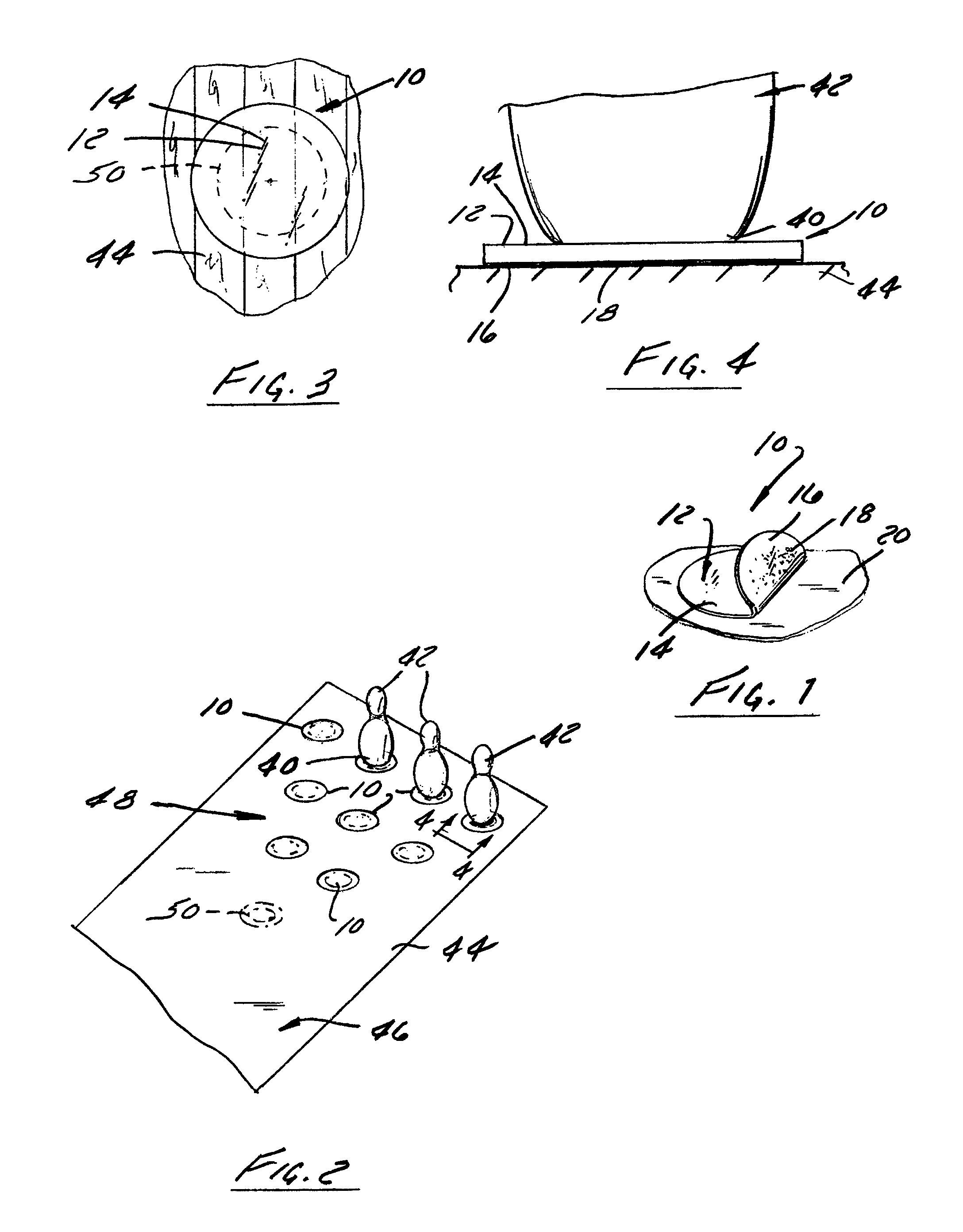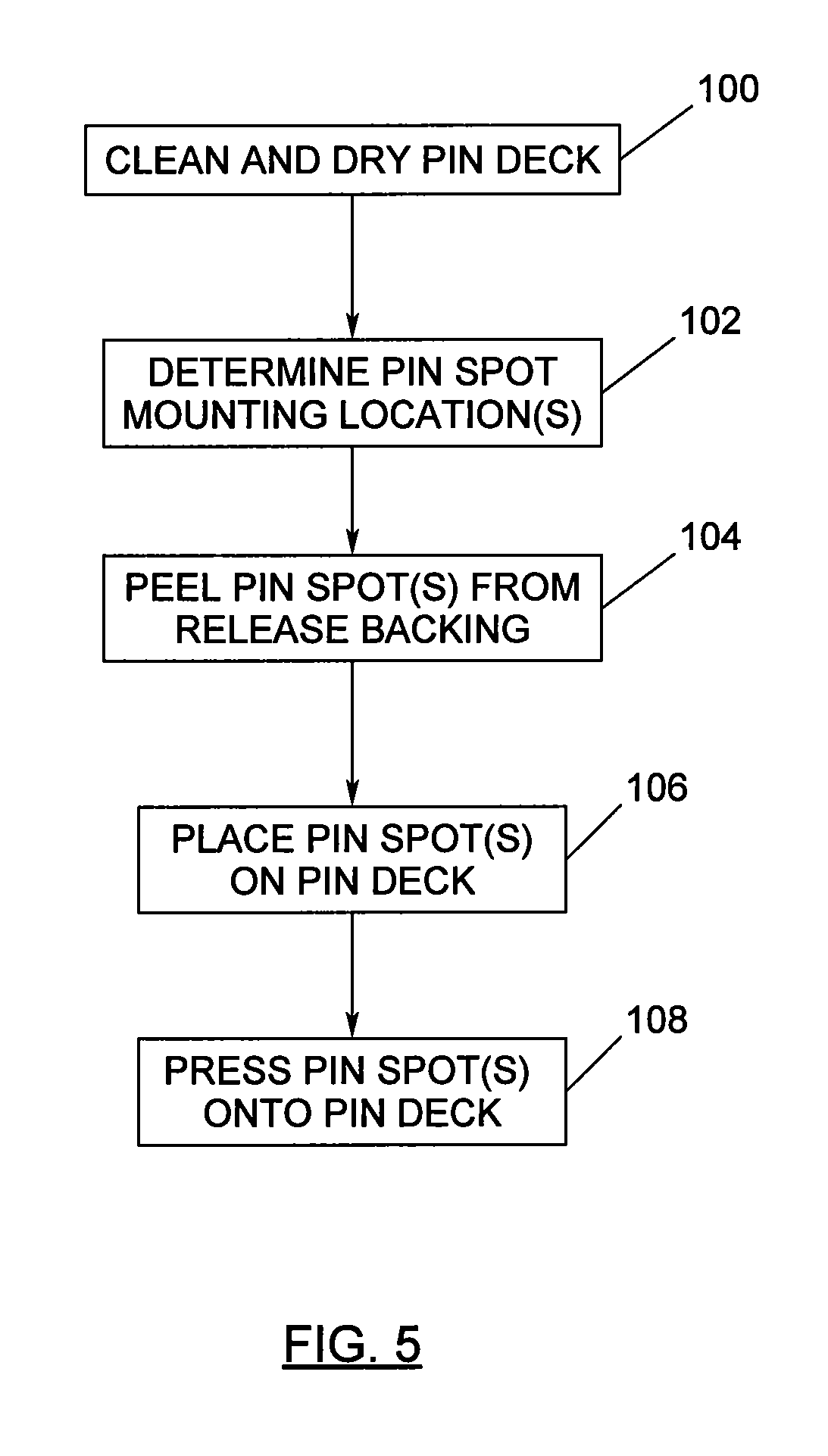No-slide pin spot
a pin spot and no slide technology, applied in the field of no slide pin spot, can solve the problems of uneven wear in comparison, significant rise in the standing out of range pin, and achieve the effect of quick installation and removal, and easy installation
- Summary
- Abstract
- Description
- Claims
- Application Information
AI Technical Summary
Benefits of technology
Problems solved by technology
Method used
Image
Examples
Embodiment Construction
[0022]Referring to FIGS. 1 to 4, there is shown a preferred construction, application and function of a self-adhesive no-slide pin spot article constructed in accordance with an embodiment of the present invention. In FIG. 4, the thickness of the pin spot is exaggerated for clarity of illustration.
[0023]The no-slide pin spot, i.e., a bowling pin spotting article designated generally as 10, comprises a piece of frictional material 12 having a top, bowling pin-contacting surface 14 and a bottom surface 16, preferably having a pressure-sensitive adhesive 18 applied thereon. A release liner or backing 20, coated on one surface with a release agent (not shown), is provided so as to permit the pin spot 10 to be readily transported and stored yet easily peeled off of the backing 20 without disturbing the adhesive 18. It should be noted, however, that the pre-applied adhesive 18 and release backing 20 are not essential. An adhesive could instead be applied to the bottom surface 16 of the fr...
PUM
 Login to View More
Login to View More Abstract
Description
Claims
Application Information
 Login to View More
Login to View More - R&D
- Intellectual Property
- Life Sciences
- Materials
- Tech Scout
- Unparalleled Data Quality
- Higher Quality Content
- 60% Fewer Hallucinations
Browse by: Latest US Patents, China's latest patents, Technical Efficacy Thesaurus, Application Domain, Technology Topic, Popular Technical Reports.
© 2025 PatSnap. All rights reserved.Legal|Privacy policy|Modern Slavery Act Transparency Statement|Sitemap|About US| Contact US: help@patsnap.com



